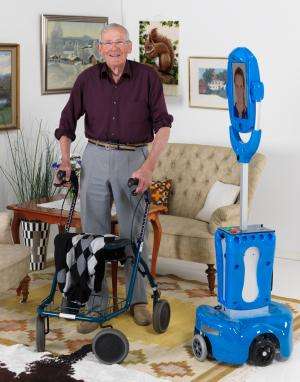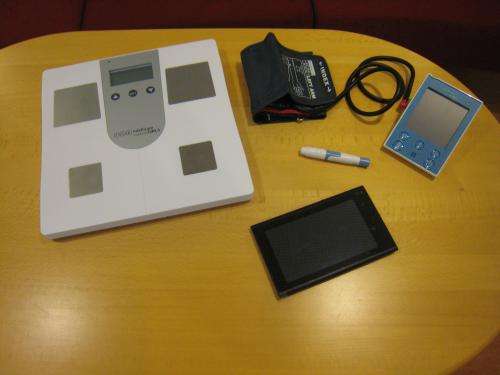Testing smart homes technology

A safer and healthier old age – that is the aim of GiraffPlus, an international project led by researchers at Örebro University, Sweden. With a focus of developing sophisticated aids for the elderly in close collaboration with the intended users, the project is now about to test the new technology in real homes.
The system has already been tested in a demo apartment in Örebro, but the next step is for researchers in Sweden, Italy and Spain to evaluate the new technology in real homes.
"Two users in Örebro are about to have the system installed. During the autumn, another three homes will be added. In the same way, the technology will be introduced in Malaga and in Rome. All in all, the GiraffPlus system will be tested in 15 different homes in the three countries," says Anette Forsberg, who is overseeing the primary healthcare aspects of the project.
GiraffPlus develops technical solutions that make it possible to continuously monitor, through a network of sensors in the home, an elderly person's health. The sensors can measure blood pressure and body temperature, register movements and detect if someone is lying still for an unusually long period of time, or takes a sudden fall.
The information from the sensors is analysed by an intelligent system, designed to quickly alert the caregiver in emergencies, but it can also be used for long-term assessment of the patient's health.
"The system is designed to be able to, for instance, chart an individual's sleeping pattern. By measuring the level of activity in the apartment during the night, the system helps both the patient and the caregiver to form a picture of the situation and adequate measures can be introduced," says Professor Silvia Coradeschi at the robotics research centre AASS at Örebro University, who is coordinating the project.

"From a physiotherapist's perspective, this system provides us with simple and satisfactory ways in which to measure levels of activity and obtain reliable information," says Anette Forsberg.
At the heart of the system is a remote controlled mobile robot, equipped with a display and loudspeaker, known as Giraff. With its help, caregivers can "visit" the patient to discuss and plan care measures based on the information that has been registered by the system.
"During testing, I and a primary healthcare physician will be using Giraff to pay virtual visits to the users based on their needs. In the future, we hope that this model will serve as a good complement to traditional methods as well as provide patients with a choice for their health visits. Some people prefer a visit to the health centre or the hospital, whereas others would rather not make that journey. We are all different," says Anette Forsberg.
Only those that the user has approved will have access to the system and no information will be forwarded without the patient's consent. The goal is to create a user-friendly system, offering services that are perceived as straightforward and of great value, while increasing the users' sense of security and improving their quality of life.
"The user can opt to let others besides the caregiver have access to the information. Perhaps family members who for various reasons are concerned and want to make sure that everything is OK in the apartment or who simply want to pay a virtual visit using Giraff," says Anette Forsberg.
"Long-term evaluation and user interaction are a few of the factors that make our project a unique one. And that input is fundamental if innovative ideas are to bring real benefits to users," says Professor Silvia Coradeschi.
Provided by Expertsvar




















